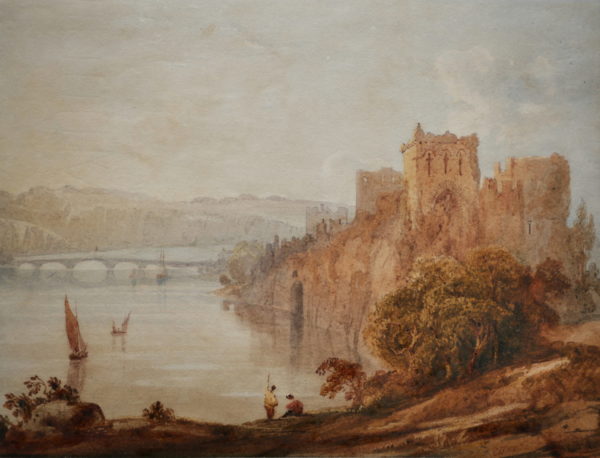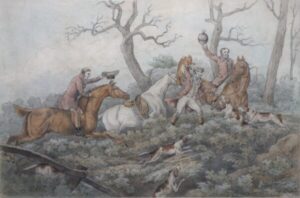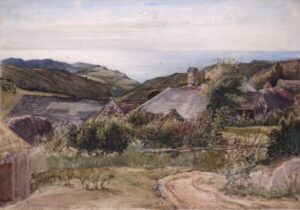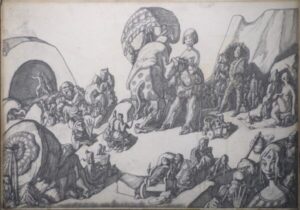Description
ILLUSTRATED PRINT: ARTIST., Copley Fielding. ENGRAVER., W. Tombleson. BOOK., “Curiosities of Great Britain. England and Wales Delineated: Historical, Entertaining, and Commercial”, alphabetically arranged by Thomas Dugdale Antiquarian, assisted by William Burnett; Published by L. Tallis, London, printed 1845.
A similar view of Chepstow Castle was published nearer to the date of our watercolour in ‘Wanderings and excursions in South Wales, including the scenery of the River Wye’, 1837 by Thomas Roscoe. Apparently, the book was first published in 1830. Although Copley Fielding contributed some engravings, the version on page 137 in the 1837 edition was engraved by William Radclyffe after Henry Warren. We haven’t managed to find a copy of the 1830 edition to compare.
Chepstow Castle at Chepstow, Monmouthshire, Wales is the oldest surviving post-Roman stone fortification in Britain.
Brand
Fielding, Anthony Vandyke Copley (1787-1855)
Anthony Vandyke Copley Fielding, commonly called Copley Fielding, was an English painter born in Sowerby, near Halifax and famous for his watercolour landscapes. At an early age Fielding became a pupil of John Varley. In 1810 he became an associate exhibitor in the Old Watercolour Society, in 1813 a full member and in 1831 President of that body (later known as the Royal Society of Watercolours), until his death. In 1824 he won a gold medal at the Paris Salon alongside Richard Parkes Bonington and John Constable.
Copley Fielding was a painter of much elegance, taste and accomplishment and has always been highly popular. He painted a vast number of all sorts of views (occasionally in oil colour) including marine subjects. Examples of his work from 1829 to 1850 can be seen in the watercolour gallery of the Victoria and Albert Museum and other major museums. Among the engraved specimens of his art is the Annual of British Landscape Scenery, published in 1839.



